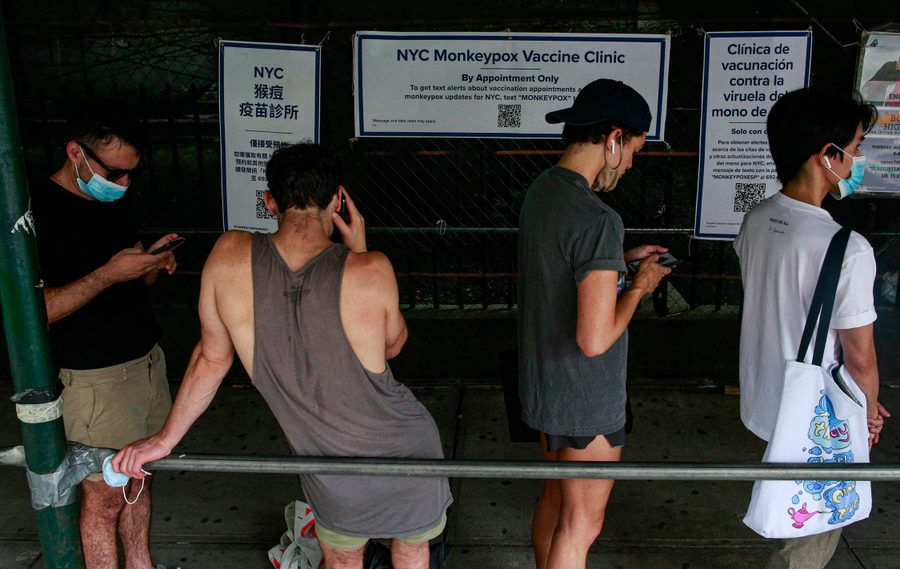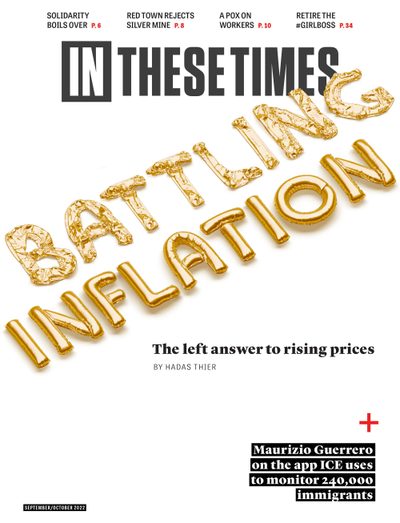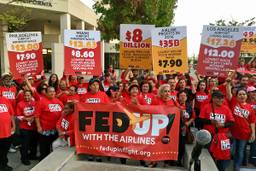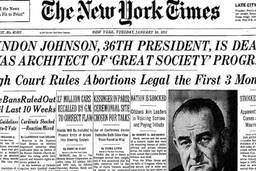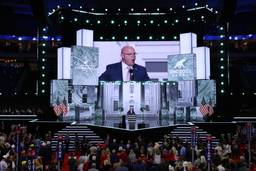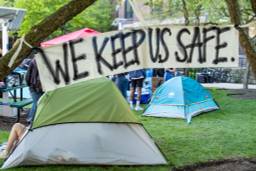As of early this week, over 11,000 cases of monkeypox have been reported in the United States, according to the Centers for Disease Control and Prevention (CDC). The virus that causes the disease, which many cities and towns have now declared a public health emergency, spreads through close personal contact, but in certain cases it can reportedly also transmit through contact with surfaces infected people have touched.
While there are still many unanswered questions regarding monkeypox, some troubling dynamics are already coming into clear view: The recommended quarantine period for those infected is far longer than that of Covid-19 cases, meaning those who contract the virus will either have to take substantial time off the job — often not a viable option for those without paid sick leave — or risk going to work while infected. The virus has been found to disproportionately impact members of the LBGTQ community, who are also disproportionately likely to be poor or working-class. The muddled rollout of the monkeypox vaccine has already created logjams in access, and, as a result, it appears poorer Americans are more likely to be unvaccinated, increasing the hazards to their health.
During the Covid-19 pandemic, the risks to workers from rapidly spreading communicable diseases became painfully obvious. In addition to contracting and dying from the virus at higher rates than the rest of the population, low-wage workers without union protections also often experienced employment consequences. Some reported that they were forced to work with active Covid infections, while others were fired for taking leave or expressing concern about Covid precautions.
If workers do contract monkeypox, according to CDC recommendations, they may need to isolate for as long as four weeks while waiting for rashes that result from the disease to resolve. But the reality is that many workers will not be able to take that time off of work: Only 56 percent of workers are eligible for Family and Medical Leave Act (FMLA) protections — and these do not require paid leave.
“If employers throughout the country were required, as a matter of law, to provide paid leave to every worker who contracts Covid, I believe we would have seen more of an emphasis on protecting workers by preventing transmission in the workplace,” Matthew Cortland, a senior fellow at Data for Progress, told In These Times.
In March 2020, Congress did pass paid leave under the Families First Coronavirus Response Act, but it expired in December of that year, and was not universal. Many Democrats also advocated national paid leave in their campaigns, but have so far been unable to enact the policy. Congress could pass similar temporary leave legislation, or it could commit to investing in long-term paid leave — a policy originally included in the Build Back Better package but excluded from the Inflation Reduction Act which was signed by President Biden on Tuesday.
In response to these developments, some states have proactively developed their own paid leave programs. And unions have pushed for them in contract negotiations as well. “A workforce that is constantly being reinfected with coronavirus, because of a lack of workplace mitigation measures, including, importantly, paid leave, is an unpredictable and unreliable workforce,” said Cortland.
But paid leave isn’t the only problem. “The background rule of employment-at-will means that, even where these protections exist, workers feel vulnerable,” said Kate E. Andrias, Professor of Law at Columbia Law School. Andrias is a coauthor of a 2021 report on just cause reform.
At-will employment, where workers can be fired for any reason so long as it doesn’t break the law, drives extreme precarity, especially for low-wage workers. This is because the risks of requesting time off for illness, complaining about working conditions, or reporting employers for wage, hour and safety violations are much higher. And, while labor organizing is a protected activity, employers can still develop pretexts for firing workers. Recent examples include Starbucks closing stores that were in the process of unionizing over “safety reasons,” and Amazon firing union organizer Chris Smalls after he spoke out about safety on the job.
Unionized workers, however, generally enjoy the protections of just cause in their collective bargaining agreements. Under just cause, employers must document and demonstrate reasons for employment termination, and workers have access to protections throughout the process, including a union representative in any disciplinary meetings. Just cause offers greater cover to workers who want to advocate in the workplace, while collective bargaining agreements offer other critical protections and benefits, often including paid leave.
The bubbling outbreak of monkeypox illustrates that both paid leave and just cause are public health issues for workers and the people they interact with. And, as with Covid-19, the risks are higher for some workers than others. “Being immunocompromised and working in a public facing role that requires interaction with fomites, for example, in food service, is not sufficient to qualify for vaccination against monkeypox,” said Cortland.
Disability and health status are not the sole risk factors. Members of the LGBTQ community, who are more likely overall to work in low-wage jobs, are at greater risk of contracting monkeypox — especially gay men, who have been prioritized for vaccines in some cities due to high numbers of cases in their communities. For those who cannot get vaccinated, though, going to work can become extremely stressful and potentially dangerous, even more so when employers don’t provide paid leave.
Gay or straight, disabled or not, without just cause protections and paid leave, those workers may not feel comfortable speaking out — and may not be able to take time off if they get sick. Other workers could then contract the virus and take it home to vulnerable family members and communities.
In the short term, unions can help secure key protections for workers facing isolation after infection or exposure, including building just cause and paid leave into the bargaining process. And right now, economic conditions are ripe for more organizing. “Low unemployment rates give workers more bargaining power,” said Andrias. “The best way for workers to increase their bargaining power is to organize with their coworkers and form unions.”
The high cost of Covid-19 to human health and society at large shows that all workers need protections including paid leave and just cause to ensure they are able to stay safe, just like their white-collar, desk-bound colleagues did for nearly two years.
As the federal government struggles to respond to monkeypox, Cortland said, “workers have largely been abandoned. Even when infectious, many are forced to go into work, further degrading their health and imminently endangering others.”
